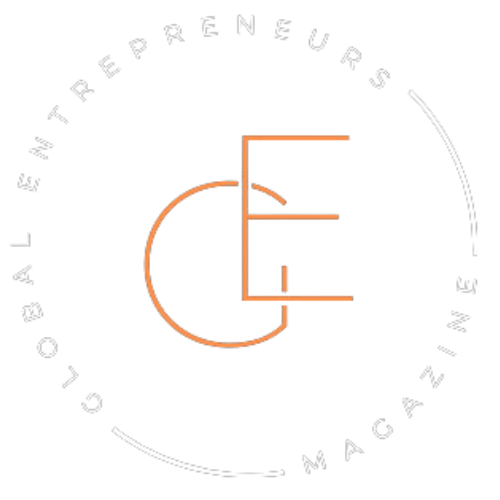Ask anyone what changed the world, and they’ll rattle off inventions. The iPhone. The internet. Electric cars. But dig a little deeper, and you’ll find that before those inventions came to life, something shifted inside the walls of a company—quietly, and often against the grain.
It started with how people were treated.
There was a time when company culture was little more than an HR buzzword or a line buried in a mission statement. Now, it’s become the bedrock of transformation. Not because it sounds good in press releases, but because the right culture sets off a chain reaction: when people feel safe to think differently, they do.
This isn’t about bean bags or snack bars. It’s about the courage to lead with trust instead of fear. To build companies where people are invited to show up fully—and not just fill a seat.
And when a leader dares to do that? The world notices.
Let’s look at the visionaries who didn’t just reshape companies. They rewrote the rules of what leadership—and impact—really means.
Steve Jobs: From control to creativity at Apple
When Steve Jobs returned to Apple in 1997, the company was flailing. Bloated product lines, internal chaos, and a workforce that had lost its spark. The magic was gone. And ironically, it had a lot to do with how the place felt to work in.
Jobs was never known for warmth. His early leadership at Apple was marked by perfectionism, intensity, and, let’s be honest, fear. He demanded brilliance—but didn’t always create the space for people to breathe.
But something shifted during his years away. When he came back, he didn’t just bring design discipline and product vision. He brought clarity—and a new understanding of what creative culture looked like.
He cut through the clutter, both in products and process. Small teams. Clear missions. Fewer distractions. He began trusting his people not just to execute—but to invent.
Inside Apple, that meant fewer meetings and more autonomy. Engineers were given room to obsess over the tiniest details, not because they were told to—but because they wanted to. Jobs stopped micromanaging every move and started protecting the space for deep thinking. He wasn’t soft—but he had learned the power of giving people the room to do great work without looking over their shoulder.
That’s when the tide turned.
What followed was more than a tech comeback. It was a cultural one. From the iMac to the iPod to the iPhone, every breakthrough traced back to a creative culture built on trust, focus, and permission to care about the craft.
Jobs didn’t set out to create a “cool” culture. He built a company where people cared too deeply to settle for average. And in doing that, he reignited Apple—and reshaped how we experience technology today.
Satya Nadella: A soft reset at Microsoft
When Satya Nadella stepped in as Microsoft’s CEO in 2014, he didn’t walk into a burning building. He walked into a fortress—one that had sealed itself from the inside.
Microsoft was profitable, dominant, and respected. But inside the walls, people were playing defense. Departments competed instead of collaborated. Knowledge was currency, and hoarding it was a survival tactic.
Nadella didn’t arrive with a loud agenda. He started with something far quieter: empathy.
He asked leaders to read Nonviolent Communication. He talked about listening, not just speaking. And slowly, the culture began to thaw.
He replaced the know-it-all mindset with a learn-it-all one. Engineers stopped being afraid to say “I don’t know.” Teams began sharing code, insights, and wins. And suddenly, Microsoft wasn’t just making software—it was building trust.
That shift inside opened doors outside. Partnerships that once felt impossible—like with Linux, even Apple—suddenly made sense. Internally, employees were no longer afraid to try. Externally, the company became more human.
Nadella didn’t overhaul Microsoft with a master plan. He changed the temperature in the room. And that gave people permission to grow.
Yvon Chouinard: Patagonia’s quiet rebellion

Yvon Chouinard never wanted to be a businessman. He started out forging climbing gear in a backyard blacksmith shop because he hated what the big brands were doing to the wilderness he loved. That spirit never left Patagonia.
From the beginning, Chouinard ran the company on a simple belief: work shouldn’t feel like a contradiction. If you care about nature, your job shouldn’t force you to harm it. If you value your time, your employer shouldn’t treat it like a transaction.
So he built a company around trust—and lived it. Employees didn’t ask for permission to surf. They went when the waves were good. The on-site daycare wasn’t a PR move. It was there because parents work better when they’re not worrying about their kids.
People weren’t just allowed to be themselves. They were expected to bring their full selves—values, voice, and all.
That culture wasn’t about slogans. It was about decisions. Choosing recycled materials when it cost more. Repairing gear instead of pushing customers to buy new. Encouraging activism even if it risked controversy.
Then, in 2022, Chouinard did the most Patagonia thing imaginable. He gave the company away. Not to investors. Not to his family. But to a trust that would ensure all profits went toward fighting climate change.
It wasn’t a shock to anyone who had been paying attention. The seeds had been planted decades ago—in a company where culture wasn’t a department. It was the foundation.
Oprah Winfrey: Building Harpo around humanity
Oprah didn’t just change daytime television. She changed the emotional temperature of a whole industry—and it started with how she treated her team behind the scenes.
At Harpo Studios, the culture wasn’t built on production deadlines or ratings goals. It was built on presence. When Oprah walked into a room, she didn’t power through an agenda. She listened. She remembered names. She made people feel seen.
That may sound simple. But in an industry driven by speed, status, and egos, it was radical.
Her team wasn’t just executing tasks—they were growing. Personally. Professionally. Spiritually, even. Because Oprah believed that work should be a place where people could evolve, not just perform.
That philosophy showed up everywhere. Staff were encouraged to journal, reflect, speak up. There were meetings about purpose, not just performance. And as the show grew, so did the culture—without losing its heart.
What aired on television wasn’t an act. It was an extension of the way things were run backstage. A culture of empathy produced content that healed, inspired, and connected. It felt real—because it was.
Harpo became a place where emotional intelligence wasn’t optional—it was the core skill. And it proved that you could build a powerhouse with kindness at the center.
Tony Hsieh: Zappos and the blueprint for happiness at work
Tony Hsieh didn’t care much for corporate rulebooks. When he took the reins at Zappos, he had a different question in mind: What if work could make people happier?
Not just customers—but employees too.
Inside Zappos, culture wasn’t a slogan—it was the product. Hsieh stripped away layers of formality. Job titles were flexible. Hierarchies were flat. Weirdness was welcomed. And those infamous core values? They weren’t just laminated on a wall—they were lived, every day.
He famously offered new hires $2,000 to quit after training—because if someone wasn’t excited to stay, why pretend?
Zappos became known for customer service, but the secret wasn’t in scripts or call-time metrics. It was in people who actually wanted to help—because they were treated like humans, not headcount.
Hsieh invested in relationships, not résumés. He created spaces for connection, conversation, even serendipity. There was a library inside the office. Spontaneous parades. A culture team whose job was literally to protect joy.
It sounds playful, but it wasn’t fluff. It was strategy.
Zappos didn’t just run differently—it felt different. And that feeling rippled outward. Customers noticed. Partners noticed. Even Amazon noticed—and eventually bought the company, promising to keep its culture intact.
Tony Hsieh proved that you can build a business powerhouse without stripping the soul out of it. And long after his passing, his blueprint for workplace happiness still echoes in companies trying to care just a little more.
What they had in common
None of these leaders set out to build a “company culture” as a talking point. They weren’t chasing buzzwords or trying to win headlines. They just noticed what was broken—and did something about it.
They listened more than they spoke. They didn’t hire people to follow orders. They hired people they trusted enough to not micromanage.
They believed in clarity over control. Empathy over ego. They made space for disagreement, for failure, for people to bring ideas that hadn’t been sanctioned yet. And instead of treating culture like a side project, they treated it like the main thing.
What made them different wasn’t charisma. It was conviction.
They led like it mattered how people felt at work. Because it did. And still does.
Why culture is the true legacy
Products come and go. Markets shift. Technology evolves. But culture? That stays long after the founder steps down or the headlines fade.
The leaders we’ve talked about didn’t just ship good ideas. They built environments where good ideas could survive the hard days. Where people didn’t burn out or zone out. Where doing great work didn’t mean losing yourself in the process.
They didn’t force change through pressure. They made room for it. And that changed everything.
Their real impact wasn’t the devices, the talk shows, the shoes, or the software. It was the way people felt working beside them—and the ripple effect that feeling created.
Anyone can chase innovation. But the ones who change the world? They start by changing the room they’re already in.
So what now? A quiet challenge for today’s leaders
You don’t need a billion-dollar company to shape culture.
You don’t need a stage, or a title, or permission.
Culture is built in the small moments—the way feedback is given, the way silence is handled in a meeting, the way someone is treated after they make a mistake.
It’s how safe people feel to speak freely.
It’s whether someone feels energized walking into the office—or quietly counting the minutes until they can leave.
The world doesn’t need more big declarations. It needs more leaders willing to choose empathy when it’s inconvenient. Willing to pause. Willing to protect the soul of a company—not with slogans, but with how they show up.
You might not change the world overnight. But you can change your corner of it.
And sometimes, that’s where the biggest shifts begin.




